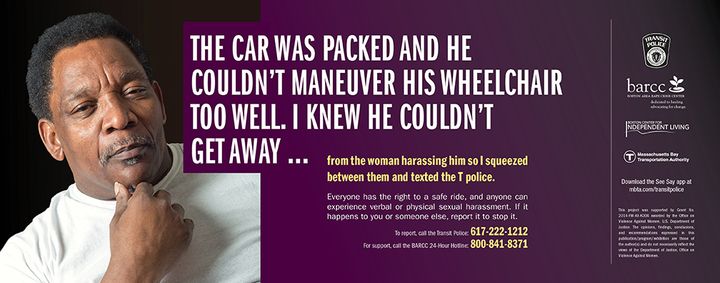This week, many of us are in mourning, and justifiably so. Just hours after we learned of the election results, many immigrants, persons of color, LGBQTI-folks and women and girls began facing more harassment and feeling more unsafe. I was appalled by what I heard within my own network, and by the knowledge that more severe forms of harassment and intimidation have occurred elsewhere.
A Black friend who lives in a primarily white neighborhood in Maryland woke up to find someone had planted a Trump sign right in front of her house.
A white gay acquaintance said someone yelled, “Go Trump, faggot” at him while he stood on Constitution Ave in Washington, D.C., at the end of his lunch break.
Many of my friends who are immigrants or the children of immigrants voiced fears about their safety. For instance, a friend of mine with Indian heritage who lives in Pennsylvania wrote on Facebook, “I will no longer feel safe in my community or my country… I never thought I would have to explain that my family is American whenever I’m told to ‘go back where I came from’.” A colleague of mine of Mexican heritage who lives in California wrote on Facebook, “I no longer feel like I belong in this country…I’ve dealt with so much racism in my life already and now the flood gates will open wider.”
Via the Facebook pages of friends who do work on sexual violence, I also read two accounts of boys at schools bragging about “trumping” girls, or grabbing them by their private parts.
While xenophobia, racism, homophobia and sexism are already rampant problems in the U.S., now harassers can feel emboldened because their commander-in-chief-to-be encourages and does these things, too. I already miss President Barack Obama and how he spoke out against discrimination and harassment, including street harassment. In contrast, President-elect Donald Trump stands FOR discrimination and harassment.
This shift in power and change of example at the highest level makes it more crucial than ever for the rest of us to model respectful behavior and speak out against those who harass, discriminate and abuse others. If initially harassment is going to increase, our response to it must, too.
This week I have found comfort and hope in the number of people who are committed to counterbalancing the negative and hate with positivism and love. They remind me of various inspiring stories I read this year about people helping those facing harassment and abuse, including these three:
- City bus driver Sharon Chambers helped a teenage girl who had been harassed and followed down the street by a man. Chambers told her to she could get on the bus and that “no one was going to mess with her on my bus.” While they waited for the girl’s grandmother and the police, Chambers said, “Don’t worry about it. You are safe. I will fight for you; no one is going to hurt you.”
- Ruhi Rahman was riding the train when a man started making racially threatening comments toward her. A woman sitting next to her jumped up to help her. After she intervened, most of the other passengers also spoke up and forced the man to leave.
- Three female friends at a bar noticed a man put something in his female friend’s drink when she wasn’t looking. When the female friend went to the bathroom, one of the three women went and warned her. They called the police who took the man away -- security footage confirmed he had tried to drug her. The woman was grateful and many people at the bar came by to thank the three women too, sharing stories about drugged date rape that had happened to them or their loved ones.
No matter who leads the country, we can all take individual responsibility to call out and try to stop harassment and abuse. For instance, you can report incidents of hateful intimidation and harassment you witness or experience to local law enforcement and to Southern Poverty Law Center.
As a witness to harassment, you can also:
- Find ideas for taking action. Marie-Shirine Yener, an artist in France, even created a beautiful illustrated guide for bystanders who see Muslims harassed – many of the suggestions apply to other types of harassment.
- On the Stop Street Harassment Blog, you can share stories about how you did something when you witnessed harassment — and inspire others to do something, too.
If you have experienced or faced harassment in public spaces
- You can use Stop Street Harassment’s national street harassment hotline (run in partnership with RAINN and Defend Yourself) to find 24/7 support in Spanish and English, by phone and via secure IM chat.

2. You can try out ideas for dealing with harassers and read examples in the book 50 Stories About Stopping Street Harassers.
3. You can share your story of harassment on the Stop Street Harassment Blog to raise awareness.
4. You can report it to the transit authority if it happens on public transit, like buses and subways. Here are brand new anti-harassment ads in Washington, D.C. and Boston

Washington, D.C. Transit Ad

Boston Transit Ad
If you have the means, you can make a tax-deductible donation to help fund the national street harassment hotline where people can find 24/7 support and advice, in Spanish and English, via phone or online secure IM. $11 covers 15 minutes of call time, 15 minutes that can be crucial for someone’s well-being.
You can also pledge to stand with women of color leadership as they take action to “pursue a democracy and economy where we all have an equal say, and an equal chance.”
Together, we must ensure that justice, equality and love prevail.
